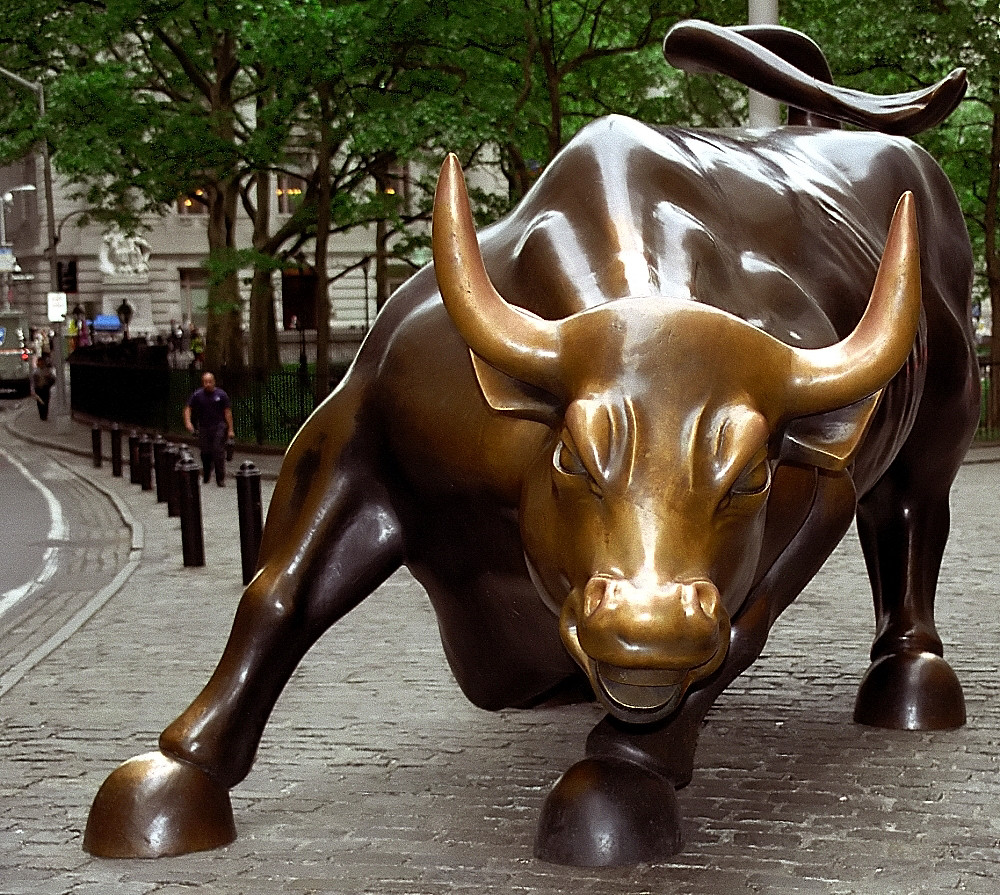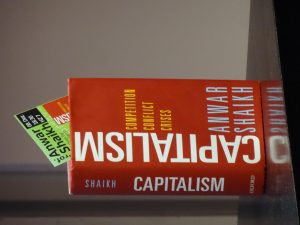Understanding Macro II: Post-War Prosperity
✑ ASAD ZAMAN | 1,133 words
‟The effectiveness of banking regulations is shown by absence of large scale bank failures for nearly fifty years.
In part 1 of this article we saw that Keynes challenged classical economics on many fronts. Widespread acceptance of Keynesian economics was one of the two major ingredients that led to prosperity in Europe and USA after World War II. We start with a discussion of the second ingredient, which was strict regulation of financial institutions.
About the author (click)
Asad Zaman is an economist, professor and social scientist from Pakistan. He is currently Vice Chancellor of the Pakistan Institute of Development Economics, Islamabad. He has a Ph.D. in economics from Stanford University (1978) and has taught in Economics Departments at U. Penn., Columbia Univ., Johns Hopkins, Cal. Tech, Bilkent Univ, Ankara, and LUMS, Lahore. Visit his personal website and read his articles on the WEA Pedagogy Blog.
In part 1 of this article (Understanding Macro: The Great Depression (1/3)), we saw that Keynes challenged classical economics on many fronts. Against the classical idea that free markets will automatically eliminate unemployment, he argued that governments needed to adopt appropriate fiscal and monetary policy in order to create full employment, as a necessary condition for high economic growth. He also argued that money is not neutral, and that there is fundamental uncertainty about the future. Widespread acceptance of Keynesian economics was one of the two major ingredients that led to prosperity in Europe and USA after World War II. We start with a discussion of the second ingredient, which was strict regulation of financial institutions.
It was obvious to all that irresponsible lending had caused the Great Depression. The creation of the Federal Reserve Bank in 1914 allowed banks to create credit freely. Banks could provide loans to anyone who asked for it, without minimal backing in cash reserves, since the Fed would provide them with cash in case of any shortfall in reserves. This was a windfall for the private banking sector, since they could provide credit for loans at zero cost to themselves, simply by making an entry on their books. Banks capitalized on this opportunity by creating a debt-based boom in the economy. Consumers were encouraged to buy everything, especially real estate, housing, and stocks on credit. Easy availability of loans created a boom in economy, referred to as the roaring twenties. As prices of land and stocks increased, people rushed out to get loans to buy more, in order to get a share of the easy profits due to soaring values. Eventually, a stock market crash in 1929 punctured this bubble, leading to the Great Depression of 1929. About 11,000 of 25,000 banks collapsed, wiping out the life-savings of millions, since there was no deposit insurance at the time.
The Great Depression was a massive crisis, a man-made disaster of unimaginable proportions. The stock market crash of 1929 set off a worldwide chain of bankruptcies and defaults. Factories and businesses closed, workers plunged into poverty in millions, houses and farms were repossessed, crops which could not be sold were dumped into the sea. By late 1932, manufacturing output had fallen to half its 1929 level, and some 30% of workers searched in vain throughout the country for jobs to support their families. Farmers unable to sell their produce, unable to repay their bank loans were evicted and with their families joined the human flood of misery. Keynes wrote that ‘we are living in the shadows of one of the greatest economic catastrophes of modern history’. In pattern worthy of note, the shock of the Great Depression created the possibilities of radical changes in ways of thinking, and in the structure of policies and institutions.
Going back to the post-war period, Central Banks all over the world started following Keynesian prescriptions for monetary policy. Keynesian theories suggested that if the rate of growth of money was lower than required by economic growth, it would lead to recession and unemployment. If it was higher than required, it would lead to inflation. Thus, the job of the Central Bank was to keep the money supply at just the right rate required to maintain full employment, while avoiding inflation. In conjunction with strict regulation of the financial sector, Keynesian policies worked like a charm for almost three decades following the second world war. Because of full employment everywhere, USA and Europe enjoyed a golden era of high growth which enriched the masses, and created unprecedented levels of prosperity. But there was a snake in this Garden of Eden, waiting for his chance to strike.
Two deep truths about Capitalist economies were discovered by Marx. One is that the fruits of capitalist production are distributed among classes according to their relative power. As an illustration, a recent study showed that the top 1% captured 85% of the growth over 2009 to 2013. The second truth is even deeper: capitalism works with the consent of the exploited, by persuading laborers of the justice and necessity of their exploitation (see ET1%: Blindfolds created by Economic Theories). Conventional economic theories of the labor market are ideal tools of propaganda for this purpose. These theories, proven false by Keynes and his followers, show that capital and labor both get paid what they deserve, in terms of their contribution to the economic production. Keynesian theories made the government responsible for creating full employment, empowering the masses, and enabling them to escape exploitation by the wealthy. This led to a dramatic rise in general prosperity, and equally dramatic decline in inequality and the wealth share of the top 1%.
The top 1% did not accept this loss of prestige and power, but made patient and far-sighted plans to reverse this situation. As Milton Friedman said “Only a crisis – actual or perceived – produces real change”. They prepared ideologies, theories, institutions and acolytes while waiting for the desired crisis to operationalize their plans. Naomi Klein in “The Shock Doctrine: The Rise of Disaster Capitalism”, has brilliantly described how crises around the globe were used to force free market policies down the throats of an unwilling public. These policies enriched corporations while impoverishing the people and creating massive social disturbances. In the USA, the opportunity to launch a counter-revolution against Keynes came in the 1970s, as we will discuss in the third and last part of this article. It is rather amazing that this counter-revolution was able to turn back the clock, reject all Keynesian advances, and go back to pre-Keynesian theories solidly rejected by empirical evidence.
It was obvious to all that irresponsible lending had caused the Great Depression. The creation of the Federal Reserve Bank in 1914 allowed banks to create credit freely. Banks could provide loans to anyone who asked for it, without minimal backing in cash reserves, since the Fed would provide them with cash in case of any shortfall in reserves. This was a windfall for the private banking sector, since they could provide credit for loans at zero cost to themselves, simply by making an entry on their books. Banks capitalized on this opportunity by creating a debt-based boom in the economy. Consumers were encouraged to buy everything, especially real estate, housing, and stocks on credit. Easy availability of loans created a boom in economy, referred to as the roaring twenties. As prices of land and stocks increased, people rushed out to get loans to buy more, in order to get a share of the easy profits due to soaring values. Eventually, a stock market crash in 1929 punctured this bubble, leading to the Great Depression of 1929. About 11,000 of 25,000 banks collapsed, wiping out the life-savings of millions, since there was no deposit insurance at the time.
The Great Depression was a massive crisis, a man-made disaster of unimaginable proportions. The stock market crash of 1929 set off a worldwide chain of bankruptcies and defaults. Factories and businesses closed, workers plunged into poverty in millions, houses and farms were repossessed, crops which could not be sold were dumped into the sea. By late 1932, manufacturing output had fallen to half its 1929 level, and some 30% of workers searched in vain throughout the country for jobs to support their families. Farmers unable to sell their produce, unable to repay their bank loans were evicted and with their families joined the human flood of misery. Keynes wrote that ‘we are living in the shadows of one of the greatest economic catastrophes of modern history’. In pattern worthy of note, the shock of the Great Depression created the possibilities of radical changes in ways of thinking, and in the structure of policies and institutions.
‟Keynesian theories made the government responsible for creating full employment, empowering the masses, and enabling them to escape exploitation by the wealthy.In the aftermath of the Great Depression, very stringent regulations on banking were passed by Roosevelt, after he was elected in 1932. It was clear that this was required, since banks have an incentive to gamble with other people’s money. When they make gains, they can pocket them. Losses are passed on to the depositors. To prevent this, the Glass-Steagall Act prohibited the banks from investing in stocks, and in many other types of speculation that had been responsible for the Great Crash. The effectiveness of banking regulations is shown by absence of large scale bank failures for nearly fifty years. Repeal of regulations in the Savings and Loan sector by Ronald Reagan let to the first massive banking crisis in the 1980s, which wiped out the profits of the entire banking sector for this fifty year period. Nonetheless, the de-regulation of banks continued, culminating in the repeal of Glass-Steagall in 1999, followed by the Commodity Futures Modernization Act of 2000, which created an unregulated financial sector. It took only seven years for the natural consequence, the Global Financial Crisis of 2007. But this is moving ahead of our story.
 |
| John Maynard Keynes (Wikimedia) + real income trends in US of five percentile groups (Wikimedia) |
Going back to the post-war period, Central Banks all over the world started following Keynesian prescriptions for monetary policy. Keynesian theories suggested that if the rate of growth of money was lower than required by economic growth, it would lead to recession and unemployment. If it was higher than required, it would lead to inflation. Thus, the job of the Central Bank was to keep the money supply at just the right rate required to maintain full employment, while avoiding inflation. In conjunction with strict regulation of the financial sector, Keynesian policies worked like a charm for almost three decades following the second world war. Because of full employment everywhere, USA and Europe enjoyed a golden era of high growth which enriched the masses, and created unprecedented levels of prosperity. But there was a snake in this Garden of Eden, waiting for his chance to strike.
Two deep truths about Capitalist economies were discovered by Marx. One is that the fruits of capitalist production are distributed among classes according to their relative power. As an illustration, a recent study showed that the top 1% captured 85% of the growth over 2009 to 2013. The second truth is even deeper: capitalism works with the consent of the exploited, by persuading laborers of the justice and necessity of their exploitation (see ET1%: Blindfolds created by Economic Theories). Conventional economic theories of the labor market are ideal tools of propaganda for this purpose. These theories, proven false by Keynes and his followers, show that capital and labor both get paid what they deserve, in terms of their contribution to the economic production. Keynesian theories made the government responsible for creating full employment, empowering the masses, and enabling them to escape exploitation by the wealthy. This led to a dramatic rise in general prosperity, and equally dramatic decline in inequality and the wealth share of the top 1%.
The top 1% did not accept this loss of prestige and power, but made patient and far-sighted plans to reverse this situation. As Milton Friedman said “Only a crisis – actual or perceived – produces real change”. They prepared ideologies, theories, institutions and acolytes while waiting for the desired crisis to operationalize their plans. Naomi Klein in “The Shock Doctrine: The Rise of Disaster Capitalism”, has brilliantly described how crises around the globe were used to force free market policies down the throats of an unwilling public. These policies enriched corporations while impoverishing the people and creating massive social disturbances. In the USA, the opportunity to launch a counter-revolution against Keynes came in the 1970s, as we will discuss in the third and last part of this article. It is rather amazing that this counter-revolution was able to turn back the clock, reject all Keynesian advances, and go back to pre-Keynesian theories solidly rejected by empirical evidence.























Comments
Post a Comment
Your thoughts...